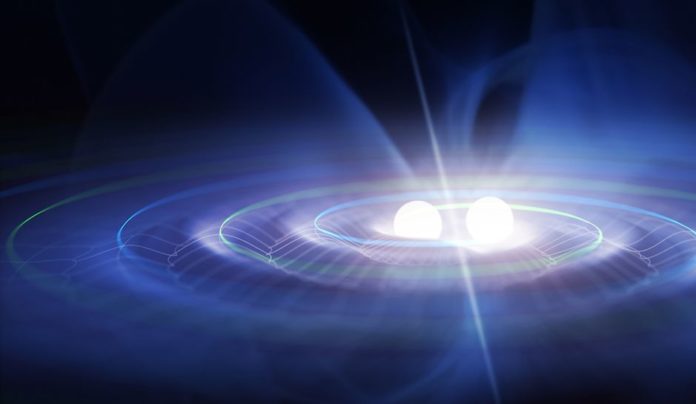Recently, scientists made groundbreaking detections that allowed them to see that gravity does not act instantaneously as Newton thought; instead, it propagates at the speed of light.
Neil Cornish, a physicist at Montana State University, said, “The speed of gravity, like the speed of light, is one of the fundamental constants in the Universe. Until the advent of gravitational wave astronomy, we had no way to directly measure the speed of gravity.”
In the course of recent months, physicists have gained exceptionally fast ground in bouncing the speed of gravity utilizing gravitational wave perceptions. Earlier, the first LIGO detections of gravitational waves constrained the speed of gravity, suggesting 50% of the speed of light.
During analysis, scientists combined the first three gravitational wave events reported by the LIGO and Virgo collaborations. By doing this, they could improve the original bounds to within roughly 45% of the speed of light.
Just after that, the LIGO and Virgo collaborations published another neutron star merger detected in August.
Scientists captured the neutron star while emitting gravitational waves and electromagnetic radiation as well from the gamma rays. The simultaneous emission of both gravitational waves and light from the same origin enabled scientists to set limits on the speed of gravity that is many requests of extent more stringent than what could be set utilizing gravitational wave flags alone.
Depending on whether an astrophysical source emits both gravitational waves and light or only the former, scientists take different approaches to constraining the speed of gravity. When a source emits both gravitational waves and light, scientists can measure the difference (if any) in the arrival times of the two different types of signals at a single detector.
They then calculated an arrival delay of just a few seconds between signals that traveled a distance of more than one hundred million light years. Such a small delay across this distance is considered virtually nothing.
Later on, scientists compared signals detected by two LIGO detectors located 1800 miles apart: one in Hanford, Washington, and the other in Livingston, Louisiana.
Scientists noted, “It’s possible to greatly improve the bounds on the speed of gravity using sources that emit only gravitational waves. For example, using four detectors located at different places on Earth, with five gravitational wave events for comparison, the constraints could improve to within 1% of the speed of light. But they could still not reach the degree of precision of experiments that have access to both gravity and light.”
Cornish said, “Many alternative theories of gravity, including some that have been invoked to explain the accelerated expansion of the Universe, predict that the speed of gravity is different from the speed of light. Several of those theories have now been ruled out, thereby restricting the ways in which Einstein’s theory can sensibly be modified, and making dark energy a more likely explanation for the accelerated expansion.”
Journal Reference
- Neil Cornish, Diego Blas, and Germano Nardini. Bounding the Speed of Gravity with Gravitational Wave Observations. Physical Review Letters 119, 161102. DOI: 10.1103/PhysRevLett.119.161102
